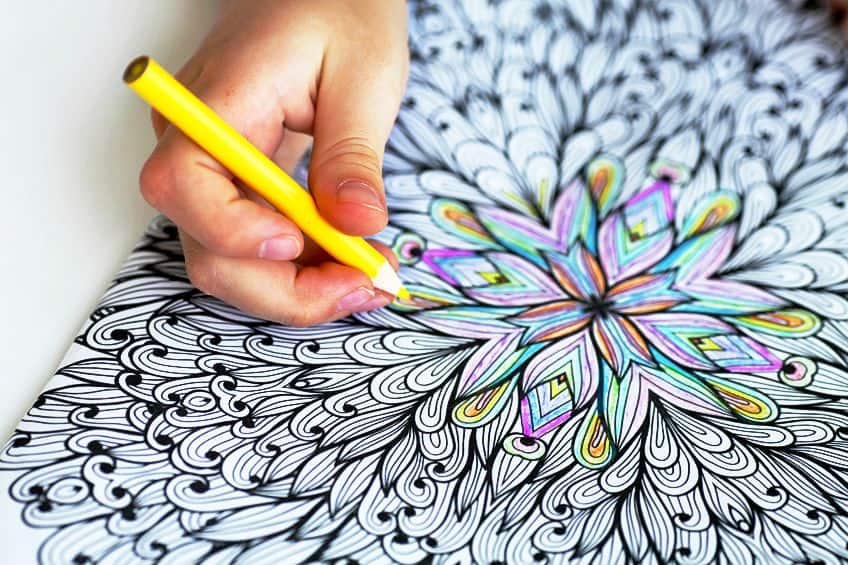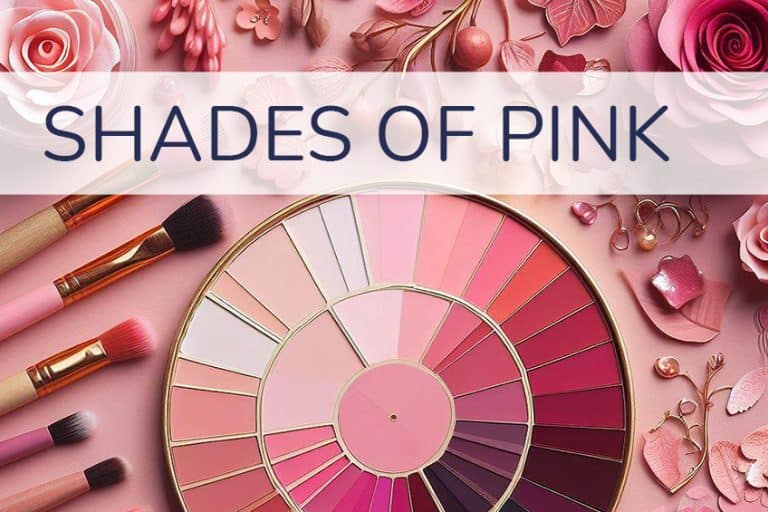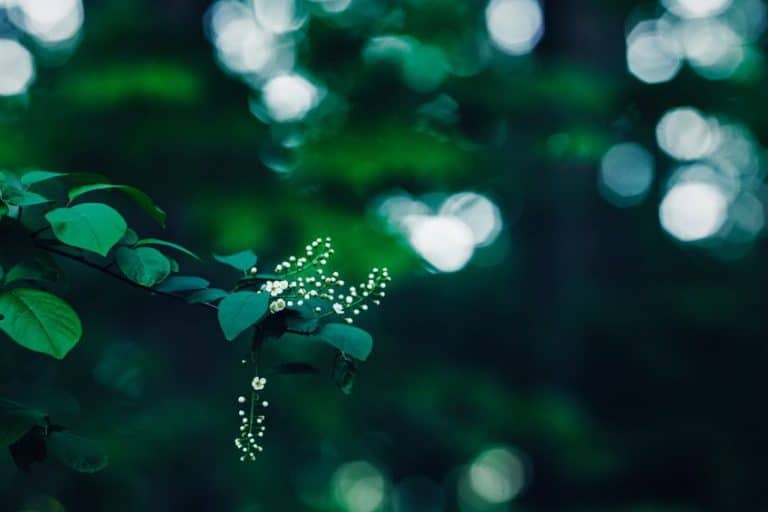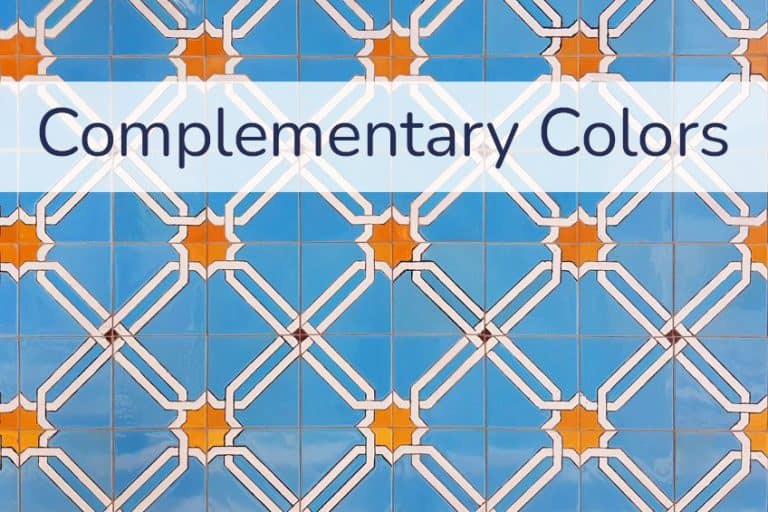Healing Colors – The Meaning of Colors and Its Healing Properties
Colors are all about light and energy and how they are reflected, absorbed, and combined. Most of us do not even think about the colors all around us and how they can impact us. There are many uses for colors, from helping to recognize objects to conveying a certain mood or enhancing a meaning. However, what color represents healing? Is there a way to use colors that can help heal the body and mind? To find out, we will be discussing the various healing colors and how they can be used below!
What Is a Healing Color?
Healing colors are all colors in the visible spectrum, each one providing its own benefits to help heal the body and mind. Warm hues like yellow, orange, and red are said to be energetic and stimulating. These colors can be used to increase your heart rate and provide warmth and comfort. Cool hues like blue, green, and purple are known for conveying a sense of calm. Most hues can be a color for healing, depending on what your needs, likes, and dislikes are. Every person perceives color differently. How you feel about color can be personal, or there can be cultural influences, among other things. Some colors we tend to gravitate towards more than others, while some colors you might not like at all. On most occasions, we might not even realize it, but we are drawn to a particular color at a certain time when we need it the most.
Certain religions like various forms of Hinduism have used ancient energy systems related to colors for healing. These energy systems commonly known as chakras, include the main colors of red, orange, yellow, green, blue, and indigo.
These colors are linked to certain areas of the body and follow the spine, starting at the base to the crown on top of the head. These healing colors are said to balance the chakras and can help to bring about harmony in the body and mind. There are other ways to use a color for health, color can be introduced via the senses like sight and by skin contact. By sight, color is introduced through things like art, which mainly uses color as a form of expression, and colors can be used as a form of communication and meaning.

You can also wear colors or use paint colors in your home. Another form of color therapy uses different color lights to help improve mental and physical health. We are now going to discuss chromotherapy, where color lights are used to directly influence our bodies and minds.
What Is Chromotherapy?
Chromotherapy is an idea where colored lights are used on the body, which then triggers the body’s healing ability and helps to bring the body and mind back into balance. This type of color therapy has also been around since Ancient times when various countries like Egypt, China, Greece, and India used colors as a form of medicine. However, there has been very little research done in this area and more is needed to support all the claims and benefits that chromotherapy provides. Colors are perceived as wavelengths of electromagnetic energy. So, each color has a certain frequency. White light is produced when all these color frequencies come together. The body recognizes these color wavelengths and then responds, each color providing a different effect.
You deal with colors every day, but chromotherapy is the deliberate use of color for healing. It is often a therapy treatment plan that is developed for the individual and their current health status.
This can also include incorporating color into your everyday life using color breathing and color visualization. Chromotherapy is considered an alternative holistic method that is most often used together with other healing therapies. Chromotherapy can be administered by various professional devices and other tools and ideas you can use at home. For example, consider a showerhead with chromotherapy. Choosing a color for health can have many benefits including some of the following.

- Healing colors for mental health, for example, depression, and helping to reduce stress, anxiety, and tension. Healing colors can also help reduce anger and aggression.
- Healing colors can also help with insomnia and help to improve sleep.
- When using color for health, it can help to improve things like seasonal affective disorder (SAD).
- Bright, warm, and happy healing colors can be used to stimulate and improve energy levels.
- Healing colors may even help with things like communication and also aid in improved relationships.
- Healing colors can also help with the reduction of high blood pressure and aid in stimulating the appetite. Some have even used colors to help with certain skin infections.
Healing Colors
Even though colors are not perceived as the same by everyone, there are some general meanings and healing effects linked to the various electromagnetic color wavelengths. You will find some of the more popular healing colors below.
Blue
Colors are produced in wavelengths, some are shorter and contain more energy, while others are longer and contain less energy. The color blue has a wavelength that measures 450 to 500 nanometers and has a short wavelength. Sunlight is a major source of blue light; however, other sources include your flat-screen television or laptop screen. When exposed to these blue lights, the high-energy blue color in these devices can make your eyes tired, which is why many wear blue light glasses that help to prevent this. At night it is also important to limit the blue light as it could suppress the production of melatonin, which helps you sleep.
This does not mean blue light is bad for you, research has discovered that blue-turquoise light from the sun can help to improve memory, boost focus, and elevate your mood.
When using blue light purposefully, it can also be used to treat seasonal affective disorder (SAD), which can affect those who do not get enough sunlight, especially during the winter months. This is because blue light is essential in regulating what is known as the circadian rhythm, which is connected to our waking and sleeping cycles. Exposure to enough sunlight helps regulate this system. If it is not regulated properly, it could lead to feelings of depression, sluggishness, and low energy, among other things.

| Shade | Hex Code | CMYK Color Code (%) | RGB Color Code | Color |
| Deep Sky Blue | #00bfff | 100, 25, 0, 0 | 0, 191, 255 |
Blue light is also effectively used as a recovery color in neonatal wards in hospitals. It is used to treat jaundice, which is triggered by high levels of bilirubin in the blood that makes the skin turn a yellowish color. Babies are usually positioned underneath blue light to help eliminate the bilirubin from the system. Since blue light has a higher energy, it is not advisable to use it in the bedroom. However, blue paint, which contains pigments, is different. Blue is then considered a calming and peaceful color that can aid in relaxation. Blue is also a cool color that may be helpful in feverish conditions, inflammation, and hot flashes. Blue can be used to help with the following.
- Can help to reduce high blood pressure
- May aid in relieving pain
- Reduces heart rate
- Can help you to sleep better
- It may also help reduce headaches
- Helps reduce anxiety and aggression
- May also offer help for those with addictions
Green
The wavelength of green light can range from around 495 to 570 nanometers, making green the best color to see from a distance. When considering what color represents healing, green is the color to look at. Green is a color of health, balance, and harmony, and is relaxing and revitalizing. Green light therapy has been linked to helping improve chronic pain and helping to relieve headaches and relax tight muscles. Green can also be used to help reduce stress, which in turn can decrease blood pressure and even help to reduce the chances of ulcers.
In general, it is a color that can help with the heart due to its effects on reducing tension and helping a person to relax.

| Shade | Hex Code | CMYK Color Code (%) | RGB Color Code | Color |
| Forest Green | #228b22 | 76, 0, 76, 45 | 34, 139, 34 |
Violet and Purple
The wavelength for purple, mainly known as violet which is what you can see in the color spectrum, is around 350 to 450 nanometers. This is the shortest color wavelength, with the highest frequency. Violet is a great color to help reduce stress and aids in better sleep. When using violet light on the skin, it helps with collagen production and can help reduce the signs of aging. Purple is used more in reference to the mixing of red and blue pigments. However, these two colors are often used interchangeably. Purple is also said to help with boosting the immune system and can help with relieving pain.
Purple is often used in meditation, as it helps to bring self-awareness, and it is an uplifting and soothing color that can help to reduce the heart rate. Purple also promotes balance within the mind and helps to stabilize emotions.
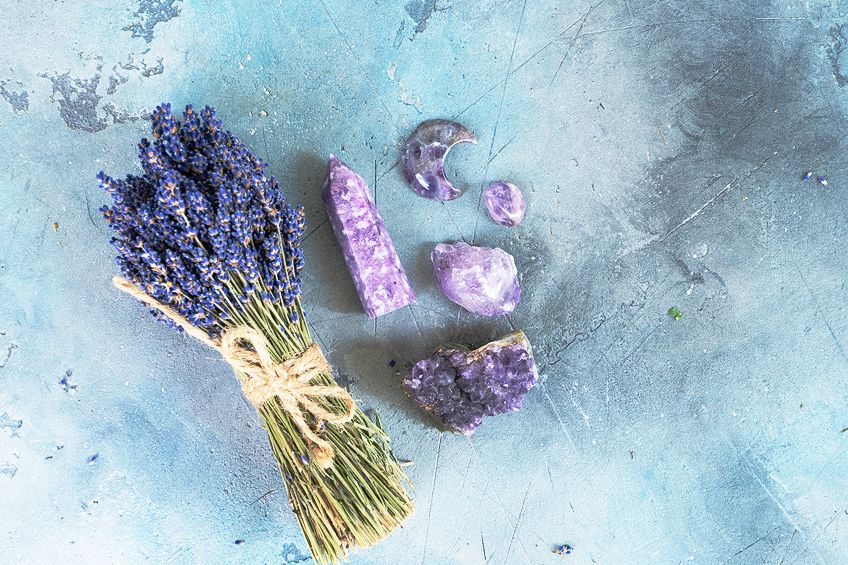
| Shade | Hex Code | CMYK Color Code (%) | RGB Color Code | Color |
| Purple | #800080 | 0, 100, 0, 50 | 128, 0, 128 | |
| Violet | #ee82ee | 0, 45, 0, 7 | 238, 130, 238 |
Orange
Orange falls just behind red and has a wavelength of 590 to 620 nanometers, making it the second-longest color wavelength. Orange light has been used to treat conditions like asthma, and epilepsy, and has been used to heal bone fractures and relieve pain. Orange can also stimulate the appetite and is beneficial for the immune and circulatory systems. Orange is also good for other digestive problems like constipation and indigestion.
The color orange radiates warmth and can uplift and rejuvenate the mind and is another color that boosts energy. Orange also stimulates creativity and encourages enthusiasm.

| Shade | Hex Code | CMYK Color Code (%) | RGB Color Code | Color |
| Orange | #ffa500 | 0, 35, 100, 0 | 255, 165, 0 |
Red and Pink
Red light wavelengths are the longest at about 700 nanometers, with the lowest frequency, and are often used in the treatment of skin conditions. It can help to reduce redness in conditions like acne and may even help to reduce wrinkles. Red light may also help in wound healing and reducing pain and acts as a recovery color for injuries. Red light can also help with brain health as it improves the production of serotonin, which helps to regulate mood and sleeping patterns. So, a red light in the bedroom might be a good idea to help improve sleep quality. Red colors used in other ways, such as painting your walls red can help to energize and stimulate.
Red is also said to help improve metabolism and appetite and can help to improve physical warmth. It can also help to increase blood pressure and improve circulation. However, too much red can also be irritating and can provoke aggression.
Pink is a more subtle version of red that has more nurturing qualities and can be used to help emotional healing. Pink can help you feel calmer, but can also help with providing energy without being as intense as red. Unlike red, it can be used with those with high blood pressure and can help to soothe feelings of anger. Pink is believed to stimulate the thymus gland and can aid in boosting the immune system.
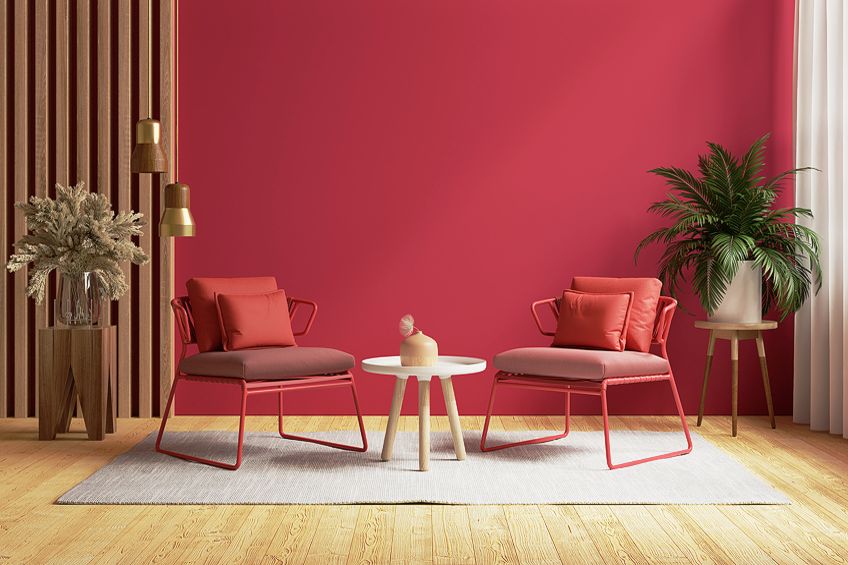
| Shade | Hex Code | CMYK Color Code (%) | RGB Color Code | Color |
| Red | #ff0000 | 0, 100, 100, 0 | 255, 0, 0 | |
| Pink | #ffc0cb | 0, 25, 20, 0 | 255, 192, 203 |
Yellow
Yellow has a wavelength of about 570 to 590 nanometers and is considered quite effective for providing relief from depression and apathy. Yellow light on the skin can help to cleanse the skin and support the immune system. Yellow is also a good color to help relieve pain, and indigestion and may aid in reducing scar tissue. Yellow is also used to treat various conditions like bone fractures, kidney stones, rheumatism, and muscular disorders, among others.
Yellow has been shown to be particularly effective for eating disorders and can help to stimulate metabolism and improve the appetite.
Yellow is a happy color, which makes it a great choice to improve depression. It also helps with mental clarity, improves memory, and can boost energy. Overall, if yellow’s only function is to help with positive thoughts, this alone will have positive outcomes on the body in many ways.

| Shade | Hex Code | CMYK Color Code (%) | RGB Color Code | Color |
| Yellow | #ffff4e | 0, 0, 69, 0 | 255, 255, 78 |
When Should You Use Healing Colors?
You can use color therapy on yourself or others when you know someone is struggling with something. Color therapy can be used in many ways from dressing in a certain color, painting with colors, or using different color crystals. Chromotherapy is a bit more intentional, as you will need a particular light source for this.
You can also use healing colors during meditation, visualization, and breathing exercises.
However, if you are concerned about a particular health condition, it is best to refer to a doctor and then use color therapy as an additional treatment. There are many ways to practice using colors for health, but a simple way is to make simple changes in your life. Look at some easy ideas below to help improve your overall well-being.

- Make sure to get outdoors, which will expose you to sunlight and all the green colors in your environment.
- Bring some green indoors to gain the benefits of a more relaxed space.
- Make good color choices. Feeling depressed, consider wearing warmer colors that can help elevate your mood. Also, choose the right colors when painting a room.
- Limit any artificial blue light and fluorescent lights. Take a break from screens and try not to watch anything close to bedtime.
- Get creative and use color in art as a way to relax and express yourself.
- Visit a color therapist in your area.
We have only covered a few of the healing colors, as there are more to consider, such as indigo, teal, brown, and even white, and black, which can all be used as colors for healing. If you are searching for a more natural and non-invasive way to improve your well-being, chromotherapy and healing colors might just be what you are looking for!
Take a look at our colors for health webstory here!
Frequently Asked Questions
What Is a Healing Color?
A healing color is any color that can be used to help improve the body, mind, and emotions. The colors used for healing are many, each with its own benefits. Colors like red are known for being stimulating, while blue is calming and can help with stress.
Can White Be Used as a Color for Healing?
Yes, it can! In fact, white light is a combination of all colors, so it can help with a variety of physical and mental problems.
Can Black Be Used as a Color for Healing?
You might not think so, but black is one of the healing colors for mental health. Black is said to absorb negative energy and is great for helping with things like anxiety and stress. Black helps with the processing of emotions if used properly, as too much black can also become depressing and overwhelming.
In 2005, Charlene completed her Wellness Diplomas in Therapeutic Aromatherapy and Reflexology from the International School of Reflexology and Meridian Therapy. She worked for a company offering corporate wellness programs for a couple of years, before opening up her own therapy practice. It was in 2015 that a friend, who was a digital marketer, asked her to join her company as a content creator, and this is where she found her excitement for writing.
Since joining the content writing world, she has gained a lot of experience over the years writing on a diverse selection of topics, from beauty, health, wellness, travel, and more. Due to various circumstances, she had to close her therapy practice and is now a full-time freelance writer. Being a creative person, she could not pass up the opportunity to contribute to the Art in Context team, where is was in her element, writing about a variety of art and craft topics. Contributing articles for over three years now, her knowledge in this area has grown, and she has gotten to explore her creativity and improve her research and writing skills.
Charlene Lewis has been working for artincontext.org since the relaunch in 2020. She is an experienced writer and mainly focuses on the topics of color theory, painting and drawing.
Learn more about Charlene Lewis and the Art in Context Team.
Cite this Article
Charlene, Lewis, “Healing Colors – The Meaning of Colors and Its Healing Properties.” Art in Context. October 30, 2023. URL: https://artincontext.org/healing-colors/
Lewis, C. (2023, 30 October). Healing Colors – The Meaning of Colors and Its Healing Properties. Art in Context. https://artincontext.org/healing-colors/
Lewis, Charlene. “Healing Colors – The Meaning of Colors and Its Healing Properties.” Art in Context, October 30, 2023. https://artincontext.org/healing-colors/.


